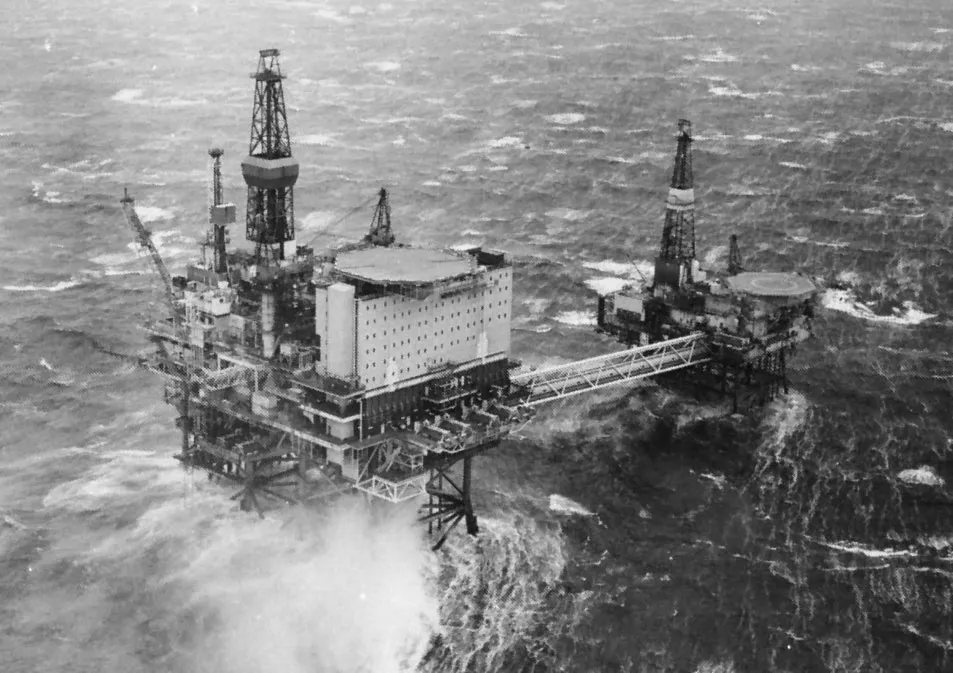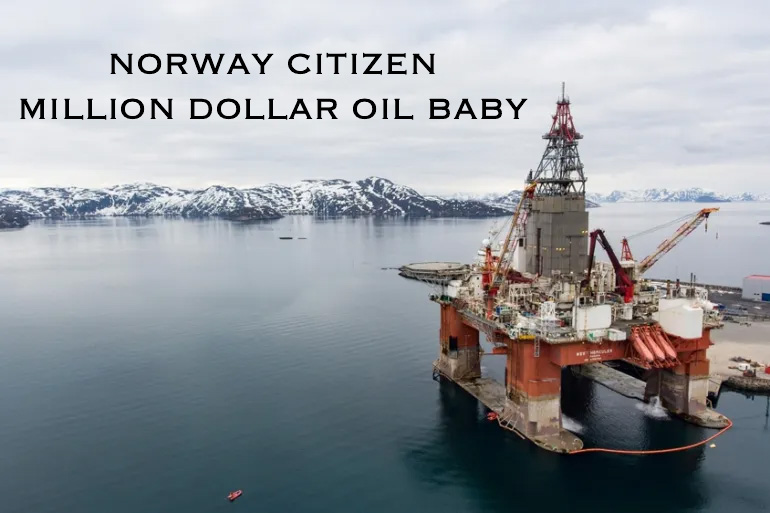Norway turned its $1.7 Trillion Oil Fund boom into the world’s biggest national savings account, and a masterclass in long-term thinking.
Imagine waking up one morning to find out you’re a millionaire, not because you won the lottery or cashed in stock options, but simply because you’re a citizen of your country.
That’s exactly what happened in 2014, when Norway’s Fund grew so large it made every citizen, on paper, worth more than one million kroner, about $160,000
The headlines read like fiction: a country of five million people quietly becoming millionaires overnight. But the real story wasn’t about luck or oil; it was about discipline. Instead of spending its energy windfall, Norway invested it, methodically, transparently, and with the future in mind.
Today, that same fun is now a $1.7 Trillion Oil Fund, making it the largest sovereign wealth fund in the world, and a living example of what it means to think long-term in a short-term world.
How Norway Got Rich Without Losing Its Head
Most nations that strike oil start acting like lottery winners. Spending skyrockets, industries overheat, corruption creeps in, a familiar pattern economists call ‘the resource curse‘.
Norway took a different route. It treated oil money the way a smart family treats an inheritance: don’t blow it all at once; invest the principal, live off the returns.
“Many countries have found that temporary large revenues from natural resource exploitation produce short-lived booms that are followed by difficult adjustments,” said former Finance Minister Siv Jensen.
“We wanted to avoid that.”
So, in 1990, the Norwegian Parliament created the Government Pension Fund Global (GPFG), better known as the Oil Fund.
The rule was simple: every krone earned from oil and gas exports flows into this fund, not the government’s regular spending accounts.
Only about 3% of its value each year, roughly equivalent to the fund’s expected real return, can be used to support public services like healthcare, education, and infrastructure (The Fiscal Framework).
That 3% rule acts like a budget seatbelt: it keeps spending smooth in good times and bad. When oil prices crash, Norway doesn’t panic or print money, it simply dips slightly into the fund’s returns.
It’s the economic version of living off interest while never touching the savings account, a concept every household can relate to.
As of 2025, the fund’s assets top 19 trillion kroner, or a $1.7 Trillion Oil Fund, spread across global equities, bonds, real estate, and renewable infrastructure. That’s roughly $300,000 for every Norwegian citizen, wealth stored for both today and tomorrow.

Image via Encyclopædia Britannica
How the Fund Came to Be
Norway’s story starts in 1969, when Phillips Petroleum struck oil at the Ekofisk field, 200 miles off the southern coast. At the time, Norway was known mostly for fishing, shipbuilding, and fjords. Oil changed everything, and could have easily changed it for the worse.
The government moved quickly. In 1972, it established a state-owned oil company, Statoil (now Equinor), and required that at least 50% of every drilling license be state-owned (Equinor history). This ensured profits would benefit the people, not just foreign companies.
The next year, lawmakers drafted the Ten Oil Commandments, a set of guiding principles still referenced today.
The first commandment:
“National supervision and control must be ensured for all operations on the Norwegian continental shelf.”
By the 1980s, Norway faced a new question: how to manage all that wealth without wrecking its economy. Economists warned about “Dutch disease”, when a single booming sector drives up prices and crushes everything else.
In 1983, a government panel led by Hermod Skånland proposed a solution revolutionary for its time: save all oil revenue in a separate fund, invest it abroad, and spend only the returns.
The Parliament approved the Government Petroleum Fund Act in 1990, and the first deposits came in 1996. By 2006, the fund was renamed the Government Pension Fund Global, reflecting its role in securing Norway’s future rather than funding short-term politics
“Good financial return over time hinges on sustainable development in economic, environmental, and social terms,” wrote Ambassador Mona Elisabeth Brother in HuffPost.
It was a visionary idea, and one that has since become the gold standard for resource-rich nations everywhere.

Photo via Wikimedia Commons/ Christian David
Inside the World’s Largest Wealth Fund
The fund is managed by Norges Bank Investment Management (NBIM), a division of Norway’s central bank. Think of it as a national 401(k) plan, except instead of being tied to a company, it’s owned by the entire country.
NBIM employs roughly 600 people across offices in Oslo, New York, London, and Singapore. Its job: invest Norway’s wealth in a way that balances solid returns with sustainability and transparency.
Roughly 70% of assets are invested in global stocks, 25% in bonds, and 5% in real estate and renewables. The fund owns small stakes, never more than 10%, in companies like Apple, Microsoft, and Nestlé
Since 1998, it’s averaged a 6% annual return, meaning Norway’s wealth grows faster than its population or spending.
“Think of it as Norway’s collective retirement account,” said NBIM CEO Nicolai Tangen. “Our mission is to safeguard the nation’s wealth, not just for today, but for generations to come.”
Tangen, a former hedge fund manager, sold his personal holdings before taking the role to avoid conflicts of interest, a move that underscored Norway’s commitment to integrity.
He’s also brought a human touch, launching In Good Company, a podcast where he interviews CEOs like NVIDIA’s Jensen Huang and OpenAI’s Sam Altman about leadership and ethics.
NBIM is also an activist investor, quietly using its voting power to push for better corporate governance, climate action, and human rights standards worldwide. When Norway’s fund speaks, boardrooms listen.
The Impact at Home and Abroad
Each year, about 3% of the fund’s value is transferred to the state budget, enough to fund public services while leaving the principal untouched (Fiscal Framework).
That money helps pay for free college tuition, universal healthcare, public pensions, and green infrastructure, without saddling citizens with debt.
“The fund has acted as our stabilizer, our buffer against bad times,” said Siv Jensen (Reuters).
Even when oil prices crashed in 2015 or during the COVID-19 pandemic, Norway simply tapped its investment income. No austerity cuts. No panic.
The fund’s moral weight is equally important. Its Council on Ethics recommends excluding companies involved in corruption, severe pollution, or human-rights abuses. Firms like Rio Tinto, Lockheed Martin, and certain tobacco producers have all been blacklisted (NBIM Exclusions).
When the world’s biggest investor divests from a company, others take note. That’s how a small country of 5.5 million quietly influences global capitalism.
How Norway’s Model Differs From The US
To most Americans, the idea of a trillion-dollar national savings fund sounds almost utopian.
The U.S. also has oil, gas, and the world’s reserve currency, yet it spends most revenues immediately, filtered through the federal budget or tax incentives for energy producers.
Imagine if the U.S. had saved even a fraction of its resource wealth since the 1970s.
Analysts estimate such a fund could now rival Norway’s in size, enough to rebuild highways, shore up Social Security, or finance the clean-energy transition without borrowing a cent.
The difference isn’t just policy; it’s philosophy.
Norway treats oil money as a national trust, not a government slush fund. Its leaders decided decades ago that wealth from the earth belonged to all citizens, present and future.
America, by contrast, funnels resource profits through private companies and congressional budgets, where priorities shift every election cycle.
In Norway, fiscal restraint isn’t up for debate; it’s law. In Washington, restraint depends on the mood of the moment.
That’s why Alaska’s Permanent Fund, modeled loosely on Norway’s approach, has survived political turnover while federal finances swing between boom and brinkmanship.
The takeaway is simple: Norway built a system where politicians can’t raid the piggy bank.
In the U.S., the piggy bank never even gets a chance to fill.

A Model for the Future
Norway’s oil fund is more than a financial marvel, it’s a reflection of a deeper cultural code.
Its success stems from the same values that shape modern Norwegian leadership: equality, transparency, and above all, trust.
Nicolai Tangen, CEO of the world’s largest sovereign wealth fund, calls it a “global responsibility project.” Under his leadership, the fund invests not only for returns but for integrity, divesting from companies that pollute, exploit, or mislead. “Our task,” Tangen says, “is to make sure the wealth from non-renewable resources benefits people who aren’t even born yet.”
That idea, of stewarding wealth for generations unseen, echoes throughout Norway’s public life.
It’s the same ethos embodied by former Prime Minister Jens Stoltenberg, who, as both Norway’s leader and later Secretary General of NATO, became known for consensus over confrontation. Stoltenberg’s diplomacy, rooted in calm pragmatism, mirrored the Norwegian model itself: progress through cooperation, stability through shared purpose.
This balance of discipline and empathy, what Thinkers50 calls “The Viking Code of Leadership”, has turned Norway into a quiet case study in how nations can thrive without losing their soul.
Where others chase dominance, Norway practices stewardship. Where others measure power by GDP, it measures it by trust.
As the world shifts from fossil fuels to clean energy, Norway’s example feels less like a fluke and more like a blueprint. It shows that even finite resources can yield infinite opportunity when managed with foresight and humility.
The next question is how other nations, especially the most powerful ones, will respond. Will they see Norway’s model as a constraint, or as a compass?
For the United States and others watching the global energy transition, the lesson runs deeper than economics. Long-term wealth isn’t built by extraction alone, it’s built by values.
Lessons for the World
Norway’s oil fund has become a global benchmark, a case study in patience, restraint, and collective foresight.
From Qatar to Chile, Botswana to Alaska, policymakers have borrowed its blueprint, each trying to replicate the same improbable balance between wealth and responsibility. (World Bank Case Study)
“Our task,” said fund chief Nicolai Tangen, “is to make sure the wealth from non-renewable resources benefits people who aren’t even born yet.”
It’s a mission that sounds simple, until you realize how few nations would ever make it their priority.
The fund’s philosophy is deceptively plain:
Save first. Spend later.
Invest globally. Diversify risk.
Be transparent. Stay ethical.
Think in decades, not election cycles.
It’s not the kind of thinking that makes headlines. It’s the kind that builds legacies.
Norway’s model shows what can happen when trust outweighs greed and discipline outlasts politics.
But it also poses a harder question:
Can this kind of stewardship survive in a world driven by speed, profit, and polarization?
As nations race toward the next energy transition, will they have the patience to plant trees whose shade they may never sit under?
Or will Norway’s quiet experiment remain an outlier, a reminder that the future belongs not to those who extract the most, but to those who preserve what’s left?
Feature Image via Al Jazeera /Jani Sipila/Greenpeace Handout via Reuters

